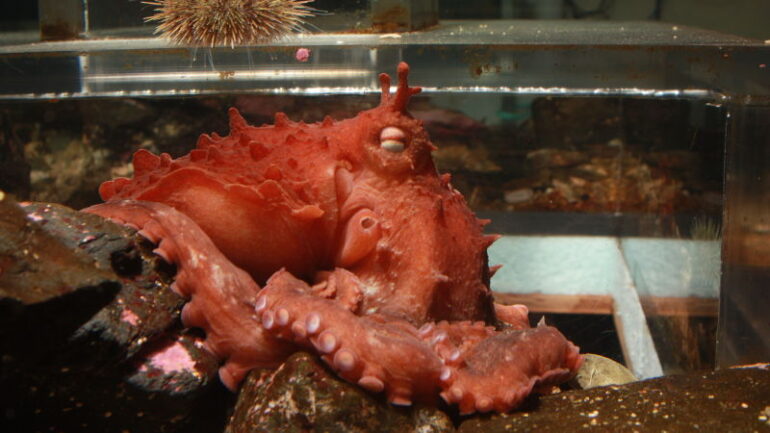A new species of giant octopus was recently discovered right underneath out noses. It seems there are actually two giant pacific species we’ve been lumping under one name — the Giant Pacific Octopus (GPO).
Although it doesn’t have an official name, its being dubbed the “frilled giant Pacific octopus” for now since its very similar in appearance to the GPO, Enteroctopus dofleini, but there hasn’t been enough evidence to consider the slight nuances as being two separate species.
There was, however, DNA evidence of two genetically distinct species in the waters of Prince William Sound in Alaska from at least 2012. But at the time, only snips of the octopuses tentacles were taken without photographs, so there was no visual evidence.
This is when David Scheel, a marine biologist from Alaska Pacific University, and Nate Hollenbeck, then a student, stepped in to see if they could find the different species. They collected 21 live octopuses snared as bycatch in shrimp pots as part of the Alaska Department of Fish & Game shrimp surveys.
Of the 21, a third of them had frills all over their mantles and white spots on the front of their heads compared to the one white dot on the GPO. They all also had one long, thin, major papillae over each eye, a trait that occurs only rarely in the giant Pacific octopus. All of the new octopuses had at least one of these traits and none of the regular GPOs did.
They took samples and later tested the DNA at the labs and guess what? All seven were genetically different. Another interesting side note. Traditional DNA testing involves snipping skin tissue for a sample and the team did this, but they also used a cotton swap of the skin — a much less invasive practice. In all seven tests, the DNA results were the same demonstrating this is a viable method for testing. .
Now that there is visual identification, it will be easier to identify in the field and determine the range and population numbers. Although the octopus is yet to be fully described and named, the research has been published in November in the American Malacological Bulletin
[via Earther]



